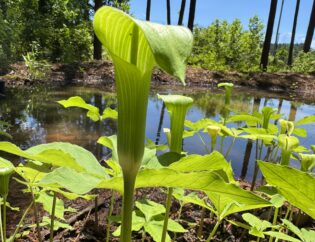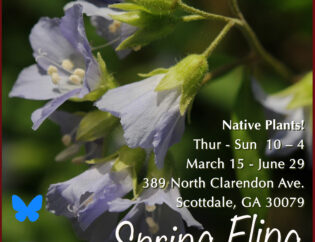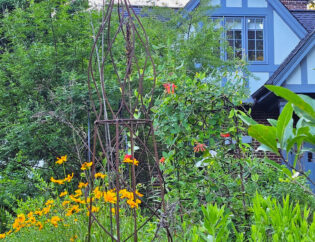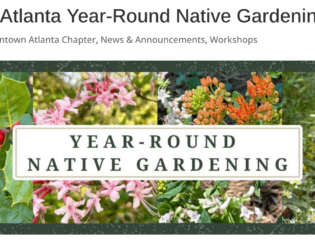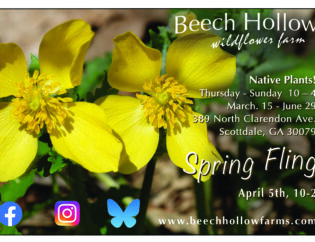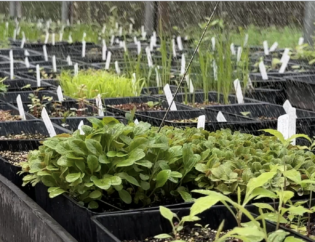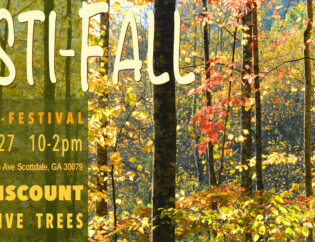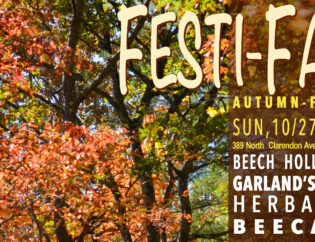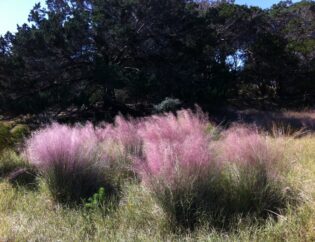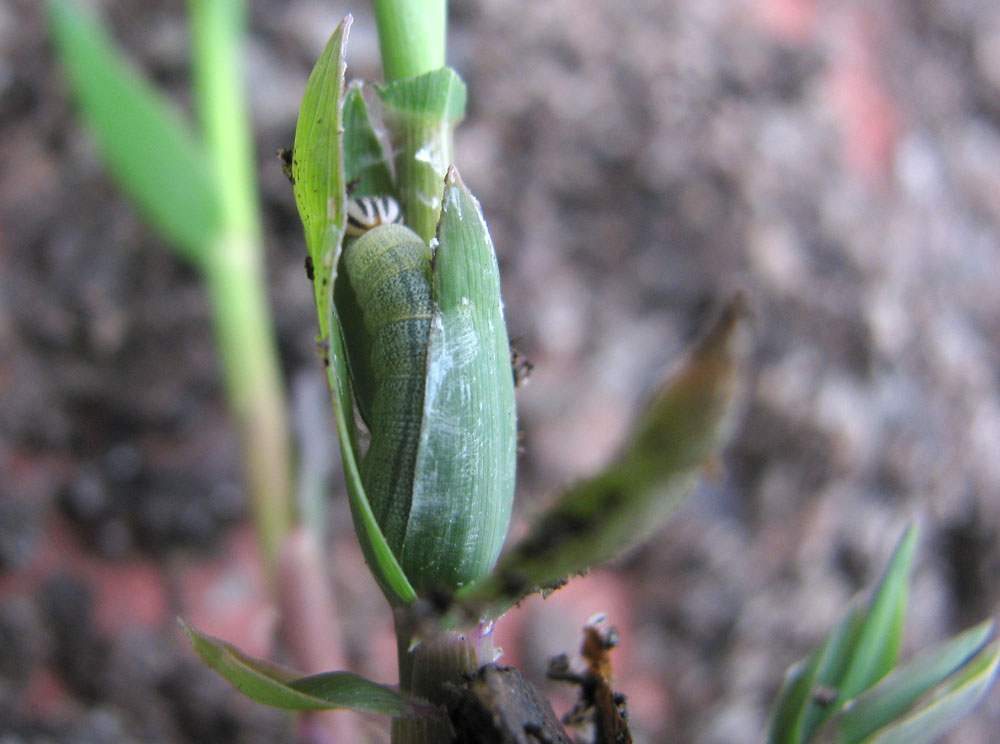
Like this one that was hiding in the base of a rolled up leaf of River Oats (Chasmanthium latifolium). Many caterpillars feed at night and then spend the day hiding in a rolled up leaf, or clinging to plant’s stem hoping to avoid detection by birds and the numerous other predators that would eat them. Part of the fun of finding them is that they are trying very hard not to be found, so it’s usually a surprise. The other fun part is trying to identify the species and see what sort of butterfly or moth it will become. I’m pretty sure this one is a Clouded Skipper which feeds on various broad leaf grasses.
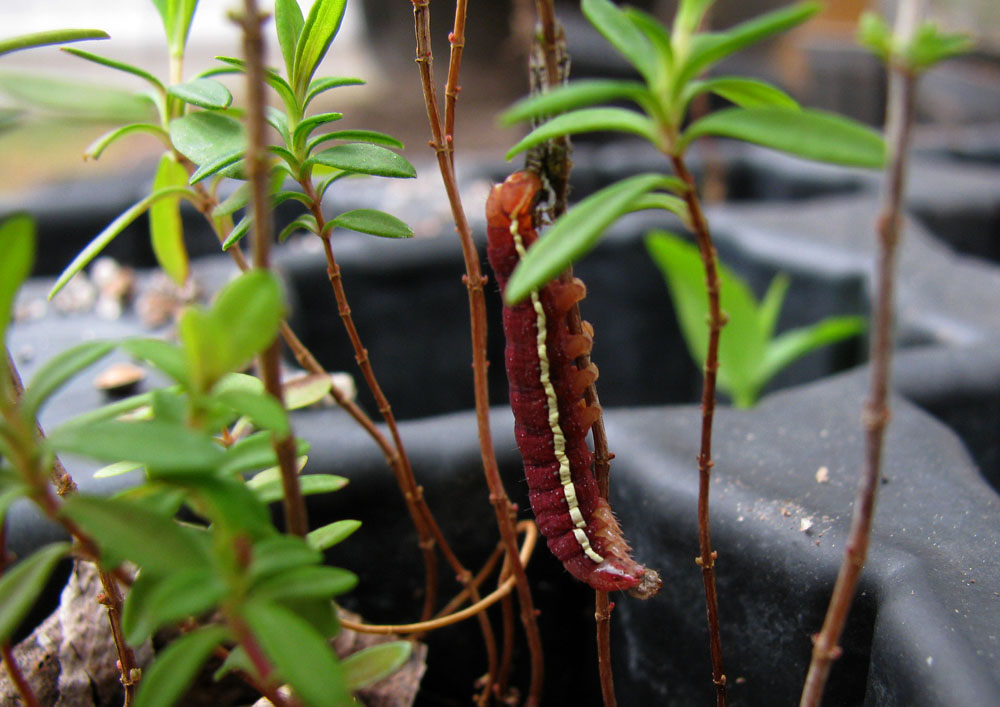
This one is going to grow up to be a moth: a Gray Half Spot to be exact. It is a more specialized species in that it only feeds on St John’s Wort (Hypericum spp.), and has developed adaptations to blend in with those plants. The bark of St John’s Wort has a dark reddish/burgundy coloring, and so does this caterpillar hiding in plain sight on a stem of Cedarglade St John’s Wort (Hypericum frondosum) seedling. I especially like finding specialists like this one because they are so exacting in their food requirements that they are almost by definition less common than their generalist cousins.
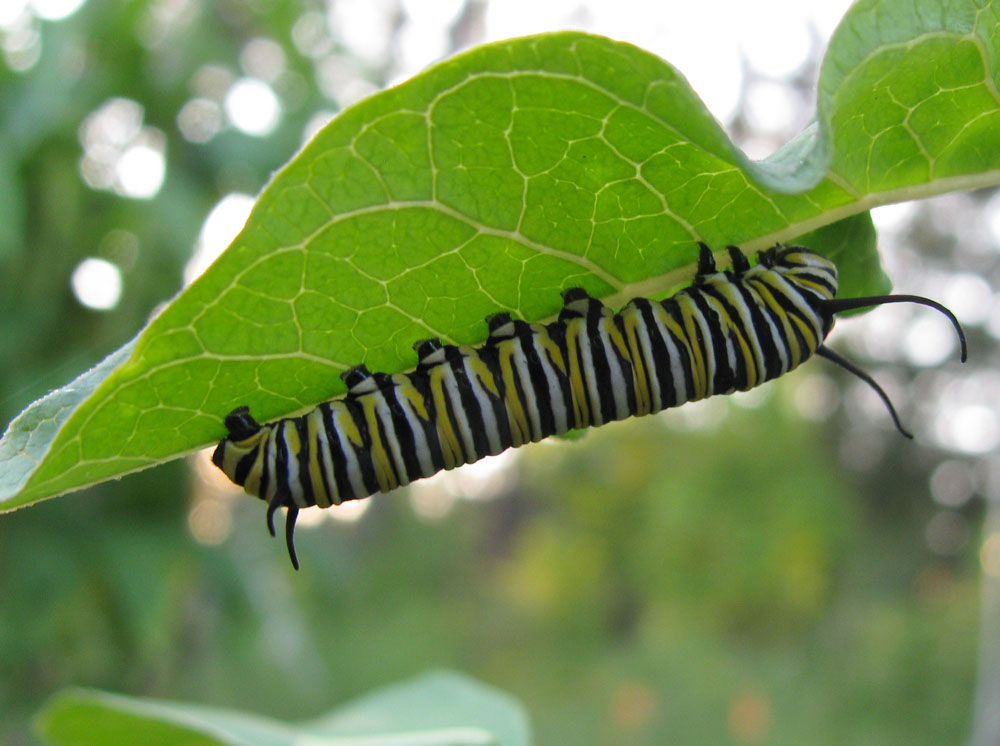
Speaking of specialist caterpillars, here is their charismatic poster child: The Monarch. Their food source is Milkweed (Asclepias spp.), a plant that is toxic to most other creatures. Compounds in the sap called cardiac glycosides will disrupt the heartbeat and possibly stop the heart altogether if too much of the plant is consumed. Monarch caterpillars and butterflies have evolved immunity to the effects of the plant’s defenses, and also incorporate the toxic compounds into their bodies which discourages predation by birds. This evolutionary strategy of eating toxic plants and utilizing their chemical defenses is shared by several other species of caterpillars including Pipevine Swallowtails, Ornate Moths, and Cinnabar Moths.
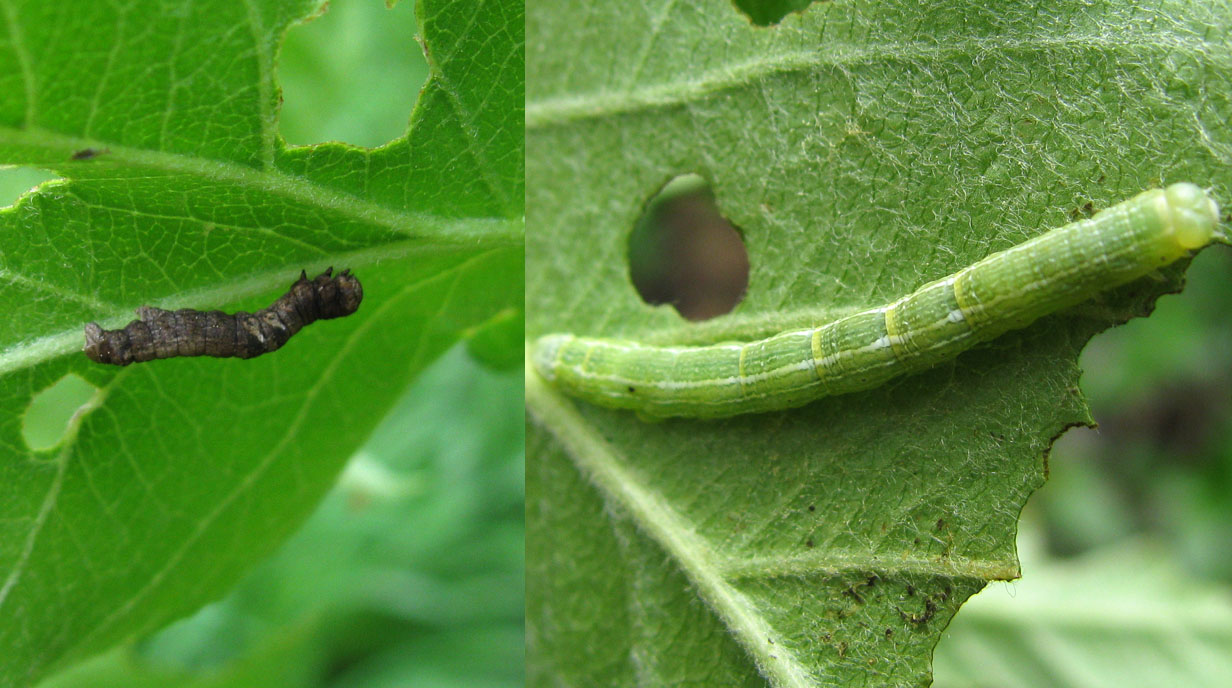
Here’s a few that are eating a non-toxic plant: the apple tree in my front yard. This is where the “I’m OK with it” can be put to the test. No one tends to care if caterpillars are eating the toxic weeds on the wayside, but when they start moving in on plants we wanted to eat, well, they might have to go. I am OK though because I know that they aren’t going to do any long term damage to the tree, especially since they are most likely going to get picked off by birds before they get a chance to spin cocoons. Each caterpillar only needs a few leaves from the plant to reach adulthood, and in this specific instance I don’t even want the leaves; I want apples. Also, this tree is not even old enough to make apples yet, so for the time being it’s just making caterpillar food. Apple and Crabapple trees (Malus spp.) host over 300 species of caterpillars, so it’s doing a great job of that, and still has plenty of leaves and continues to shoot upward.
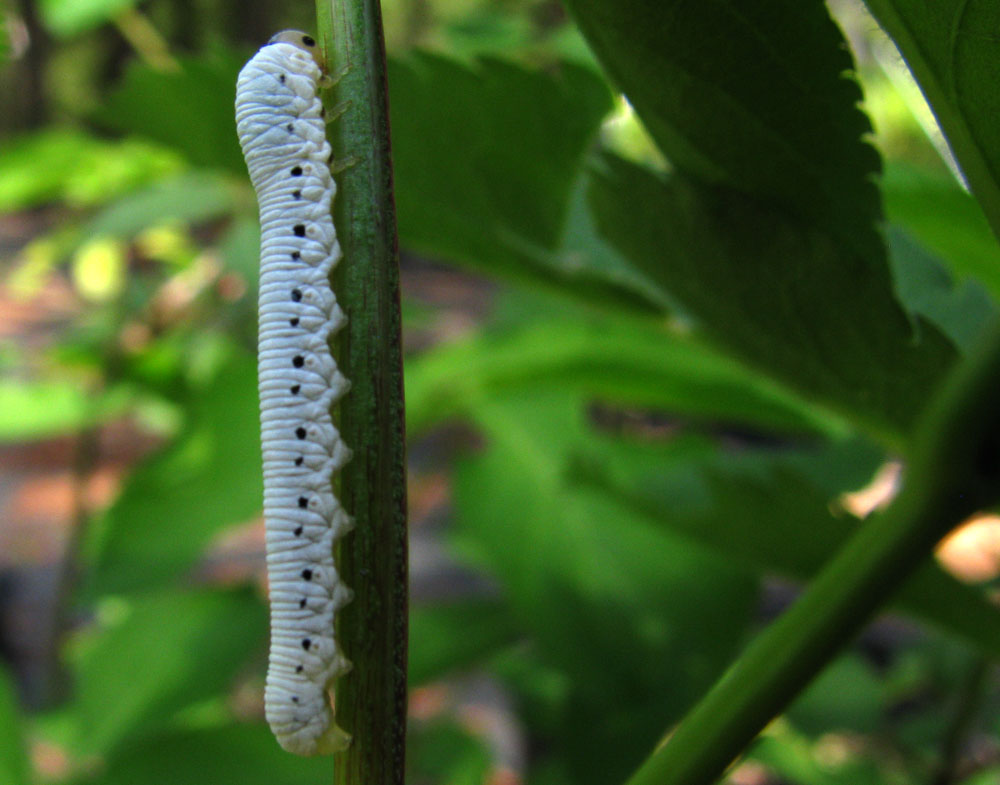
This one isn’t a caterpillar at all. It just looks and acts like one. It is a Sawfly larva of the genus Macrophya. It took me a good bit of searching to figure that out because I was operating under the assumption that it was a caterpillar. Sawflies, like butterflies, lay their eggs on specific host plants, and this one uses Elderberry (Sambucus spp.). Interesting to note that Elderberry leaves and stems are toxic, so it looks like these sawflies have similarly adapted an immunity and utilization strategy like the Monarchs.
Caterpillars are critical links in the food web. They facilitate the last leg of the transformation of the sun’s energy into protein. Protein that is a critical food source for many other animals, especially when they are young and growing rapidly. A few tattered leaves on our ornamental plants are a small price to pay to ensure the proper development and survival of a clutch of baby birds. The lucky caterpillars that do escape predation and become butterflies or moths will pollinate the same plants that sustained them as larvae (and many others!), thus ensuring a new generation of plants to keep the circle rolling right along just as it has for millions of years.
